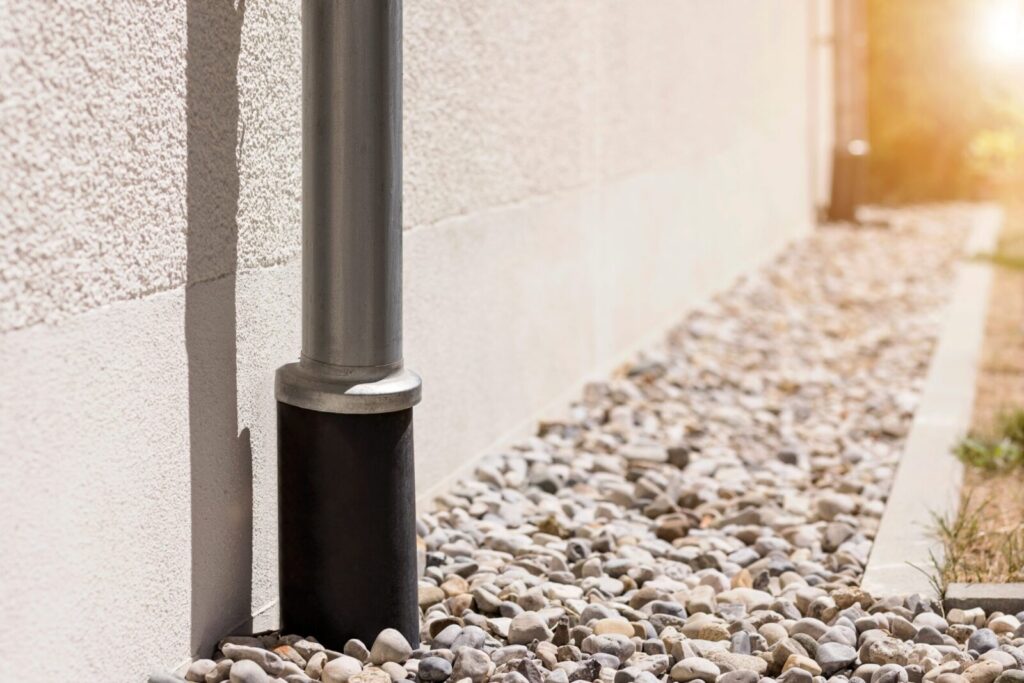When it comes to managing groundwater and preventing flooding, a French drain system can be a highly effective solution. This drainage system is specifically designed to redirect water away from foundations, driveways, and crucial landscaping features, ensuring that standing water doesn’t create long-term problems like dampness, mold growth, or structural damage for homeowners. However, an improperly installed French drain system can lead to a plethora of issues, negating its intended purpose and potentially causing more harm than good to property. To save you from this hassle, let’s discuss some common mistakes to avoid when installing a French drain system to ensure its effectiveness and longevity.
Neglecting to Plan the Drainage Layout
Obviously for successful completion of any project planning is essential so before you even pick up a shovel, carve out a comprehensive plan for your French drain installation. Failing to plan can result in a poorly aligned drain that does not effectively channel water away from vulnerable areas. Take time to assess your property’s topography, understand where water naturally flows, and determine the optimal placement for your French drain system. Utilize tools such as drainage maps and elevation studies to gather precise data. But achieving all this on your own can be tizzy and frustrating; it would be better to leave planning and installation to French drain installers in the Bay Area.
Choosing the Wrong Materials
Another commonly made mistake is the selection of inappropriate materials for the French drain installation. The type of pipe, gravel, and fabric used can significantly impact the system’s ability to function effectively over time. Opt for perforated PVC piping to ensure optimal drainage, and utilize clean, coarse gravel, as it promotes sufficient water flow while preventing soil clogging.
Inadequate Slope in the Drainage Path
Possibly, one of the most common mistakes to avoid is failing to install the French drain with the correct slope. A French drain should have a consistent downward slope – typically 1% or 1/8 inch for every foot of horizontal run – to ensure that water flows effectively toward the desired drainage point. Neglecting the necessary slope can create issues like stagnant water, which may lead to sediment buildup and reduced drainage capacity.
Ignoring Local Codes and Regulations
Homeowners often ignore local building codes and regulations when installing drainage systems. Ignoring these guidelines can lead to fines and might require costly rework down the line. It’s essential to check with local authorities about any permits or regulations governing drainage installations in the San Francisco Bay Area.
Insufficient Drainage Capacity
Refrain from underestimating the volume of water your French drain will need to handle, which is a common mistake that can lead to system failure. Calculate the expected water flow based on factors such as local rainfall, soil type, and the area you are draining. In many cases, homeowners install a system that is too small or insufficiently spaced, leading to overwhelmed drains and recurrent flooding.
Neglecting Maintenance Considerations
Every drainage system requires regular maintenance to function effectively over time. One significant mistake is failing to consider how easily the French drain can be maintained. Ensure that the system is accessible without major obstructions, as this will affect your ability to maintain and clear the drain from debris or clogs in the future.
Overlooking Proper Backfill Technique
Backfilling the excavated area improperly is another mistake that can jeopardize the efficacy of your French drain. After installing the pipe, it’s essential to carefully backfill with gravel while ensuring that sediment doesn’t compromise the system. Additionally, avoid using soil as backfill, as this can lead to quicker clogging of the drains..
Not Considering Landscape Aesthetics
Finally, many homeowners focus solely on functionality and neglect the aesthetic aspect of the French drain installation. A visible, unattractive drainage solution can detract from your landscaping and overall property value. However, there are creative ways to integrate a French drain into your landscape design, ensuring it serves its purpose without being an eyesore.
Installing a French drain system in your yard can be an effective way to manage water drainage, but it’s important to avoid the common pitfalls outlined above. By carefully planning the layout, choosing the right materials, ensuring proper slope, adhering to local regulations, assessing drainage capacity, considering maintenance needs, executing proper backfilling, and blending aesthetics with functionality, you can enhance the performance of your drainage system significantly.
If you are unsure about any aspect of your installation or prefer expert assistance, consider consulting a qualified drainage specialist. By doing so, you ensure that your French drain system will be a durable, efficient, and visually pleasing addition to your property for years to come. Need to install a French drain at your home, book free estimate now.

